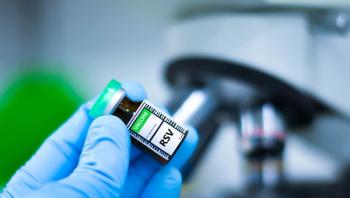
AMT-061 Achieves Sufficient Increases in Factor IX Levels for Patients With Hemophilia B
AMT-061, an AAV5 vector containing factor IX (FIX)-Padua variant, has been shown to increase FIX activity to threshold FIX levels sufficient to significantly reduce the risk of bleeding events without the risk of adverse immune reactions.
AMT-061, an AAV5 vector containing factor IX (FIX)-Padua variant, has been shown to increase FIX activity to threshold FIX levels sufficient to significantly reduce the risk of bleeding events without the risk of adverse immune reactions.
Hemophilia B, also called Christmas disease and FIX deficiency, was first discovered in 1952 in a patient named Stephen Christmas. Compared with hemophilia A, hemophilia B is a rarer bleeding disorder, with reported cases only in 1 of every 20,000 people. In patients with hemophilia B, a genetic disorder causes defective or missing FIX, a clotting protein. The genetic defect occurs in the F9 gene located on the X chromosome. Although
Hemophilia B is categorized according to disease severity into mild, moderate, and severe, distinguished through the amount of FIX in the blood (mild; 6% to 49%, moderate; 1% to 5%, severe; <1%). Symptoms dependent on the amount of FIX deficiency
AMT-061, created by uniQure, is an AAV5 vector that carries the Padua variant of FIX. FIX-Padua modifies FIX at position 338 (substitute leucine for arginine) to provide a gain of function effect that exerts an 8 to 10 times greater clotting activity compared with the wild-type recombinant FIX.1 With greater activity, AMT-061 is expected to increase and sustain FIX levels to reduce the risk of bleeding events.
Results from this study have led investigators to begin initiating the phase 3 HOPE-B study that will enroll 50 adult patients with severe or moderately severe hemophilia B. End points that will be examined include annualized bleeding rates, safety, and annualized FIX replacement therapy usage. “The initial data from our phase 2b study suggest this target profile is achievable, and we look forward to providing further clinical updates on the study at medical conferences in 2019,” said Matt Kapusta, chief executive officer of uniQure.
References
- Simioni P, Tormene D, Tognin G, et al. X-linked thrombophilia with a mutant factor IX (factor IX Padua). N Engl J Med. 2009;361(17):1671-1675. doi: 10.1056/NEJMoa0904377.
Newsletter
Stay ahead of policy, cost, and value—subscribe to AJMC for expert insights at the intersection of clinical care and health economics.















































